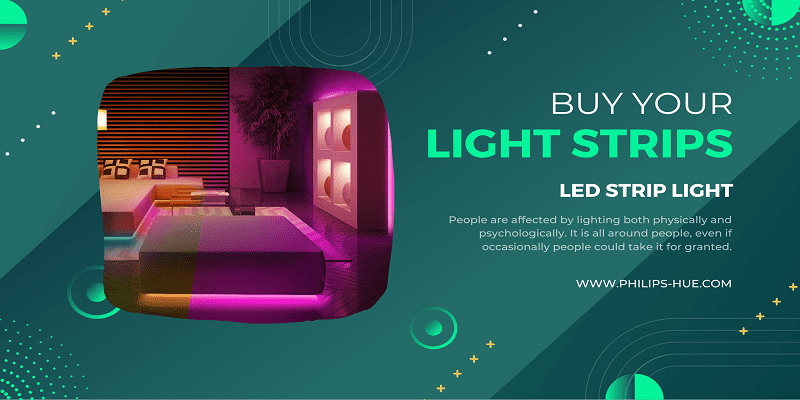People are affected by lighting both physically and psychologically. It is all around people, even if occasionally people could take it for granted. Every time they turn on a light in their homes, offices, or restaurants, they are bathed in a glow that can alter their mood.
When they don’t have much control over the lighting they come across while they’re out and about, they can adjust the lighting in their homes to the rhythm of their days, giving them a burst of energy when they need it or a sense of serenity at night. Let’s get to know about Light strips.
What is an LED Strip Light?
LED strip lights are a new type of adjustable lighting. Despite numerous variations and exceptions, they frequently display the following characteristics:
- A wide array of individual LED emitters are set on a flexible, slender circuit board.
- Use low-voltage DC power to operate
- a variety of fixed and variable hue and brightness options are available.
- Ship on a long reel that may be cut to length and has double-sided adhesive for installation, which is usually 16 feet (5 meters) long.
The structure of an LED strip
A Philips Hue light strip light typically has a width of 10 to 12 mm and a length of at least 16 feet (5 meters). They may be cut to the necessary lengths along the cutlines with scissors.
Individual LEDs are put along the strip at densities, typically between 18 and 36 LEDs per foot. The light color and quality of each individual LED to determine the total light color and quality of the LED strip.
The LED strip has double-sided adhesive already adhered on its reverse. The LED strip can be affixed to nearly any surface after the liner has been simply peeled off. LED strips can be mounted on curved and irregular surfaces due to the flexibility of the circuit board.
Finding the LED strip’s brightness
Lumens are a unit of measurement used to assess the brightness of LED strips. Since different LED strips can vary in efficiency, unlike incandescent bulbs, wattage ratings are not always indicative of actual light production.
Lumens per foot are commonly used to measure LED strip brightness (or meter). A high-quality LED strip’s light output per foot should be at least 450 lumens, comparable to a conventional T8 fluorescent lamp.
Three elements, in particular, determine the brightness of LED strips:
- output and effectiveness of light per LED emitter
- number of LEDs per square foot
- The LED strip’s power consumption per foot
- A warning sign is an LED strip light that doesn’t specify its brightness in lumens. Additionally, be wary of cheap LED strips that advertise extreme brightness because they could overdrive the LEDs to the point of early failure.
Density & Power Draw of LEDs
LED density is crucial when establishing the pitch (distance between LEDs) and whether or not there will be apparent hotspots and dark patches between the LED emitters. The best, most uniformly dispersed illumination effect will often be achieved with a higher density of 36 LEDs per foot (120 LEDs per meter).
When comparing LED strip prices, consider LED density differences since LED emitters are the most expensive part of the production process for LED strips.
Buy a Philips Hue light strip and enjoy the lighting.


